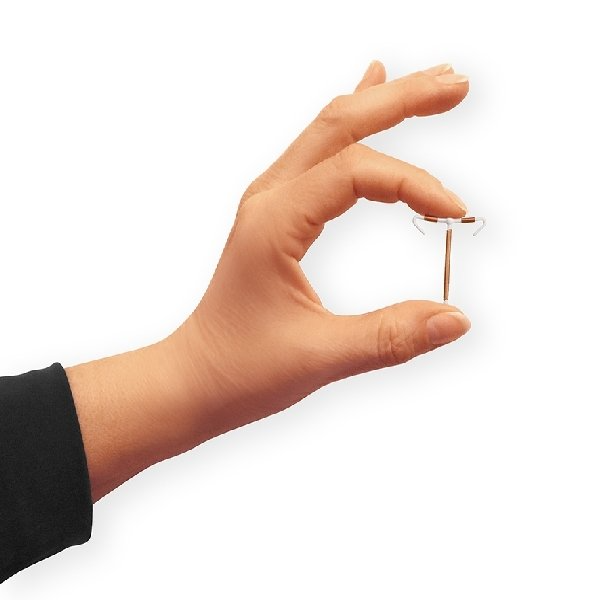Instructions For Use
What are the patient instructions for use for the Flexi-T IUD? Explore the information you need to know, including instructions for patients and how the IUD works.
Instructions For Use
If you are like most women considering the Flexi-T IUD, you have questions about the instructions for use. You may want to know what to expect once Flexi-T has been inserted and how the intrauterine contraceptive device works. Your trusted health care provider will inform you about all risks and benefits of the device, how it works, and the potential side effects.
We believe a primary benefit of the Flexi-T IUD is that you will not need to worry about performing the insertion or removal on your own. You need only to discuss the Flexi-T with your
health care provider, who will then directly provide the IUD or send a prescription to your pharmacy. Finally, you will schedule an insertion appointment during which your physician will perform the safe
insertion procedure.
How the Flexi-T IUD Works to Prevent Pregnancy
Flexi-T comes in different types to accommodate the needs of women of all ages and sizes. It is a small, flexible, T-shaped plastic (polypropylene) device that features smooth and rounded tips and pure copper wire or tubing. After insertion into the uterus, the Flexi-T’s copper releases traces of copper into the uterus, preventing sperm cells from reaching the egg, which prevents the fertilization process.
In the unlikely event that egg fertilization occurs, the copper prevents the egg from implanting in the uterine wall. Because the Flexi-T begins working as soon as it is inserted, the device is an excellent option for accidents and can be an effective “morning after” solution.
The Flexi-T is highly reliable with a less than 1% risk of pregnancy, making it more reliable than the birth control pill and “morning after pill.” Flexi-T provides 99.9% effective contraception for five years at which point you must schedule a removal appointment. If you wish to become pregnant before the five years is complete, you should schedule a removal before attempting to conceive. Or, after removal, you can ask your provider to immediately replace the old Flexi-T IUD with a new one to continue the contraception.
Who Should Use Flexi-T?
Currently, more than 1 million women from all over the world trust Flexi-T. The device is a good fit to meet your needs if you are a woman who:
- Is in the reproductive period between the first menstruation and menopause
- Do not want to get pregnant
- Do not tolerate hormone-based contraceptives or prefer not to use them
- Need an easy-to-use, hassle-free contraceptive to prevent pregnancy that is safe and effective for long-term use
- Do not want to risk human error in birth control or deal with daily medication ingestion or condom-use
- Desire a “set-it-and-forget-it” contraceptive solution
Who Should Not Use Flexi-T?
While Flexi-T is a good contraceptive option for many women, you should not have it inserted if you are experiencing the following:
- Pregnancy
- Infection in the womb, such as Pelvic Inflammatory Disease
- Undiagnosed bleeding
- Uterine fibroids or polyps
- High risk of ectopic pregnancy
- Uterine malformation
- Uterine cancer
- Copper allergy
- Anemia
- Too small uterus
What to Expect from Flexi-T Insertion and Removal
Your general practitioner (GP), nurse practitioner (NP) or gynecologist will insert the Flexi-T during a scheduled appointment. If the physician has ultrasound equipment, there is no need for an internal examination. The IUD insertion appointment takes approximately 20 minutes, with the insertion procedure only requiring five minutes or less.
Flexi-T is user-friendly for medical professionals and for patients. Women experience minimal, if any, discomfort. To minimize discomfort, you may take an ibuprofen or two paracetamol tablets approximately one hour prior to the insertion appointment. If you are especially concerned about pain during insertion, you can request local anesthetic, such as Lidocaine.
In most cases, your physician will insert the Flexi-T while you are menstruating. This is the time when risk of pregnancy is minimal, additional blood loss can be avoided, and insertion is easier.
During the Insertion Procedure, You Will Experience the Following:
- Lying down in a reclining position on an examination table or chair
- An ultrasound, if equipment is available, to check the size and position of the uterus for correct insertion
- An internal examination if no ultrasound equipment is available
- The physician will insert a speculum into the vagina to see the cervix opening
- A probe is then used to confirm the angle and depth of the uterus
- The physician inserts the Flexi-T and withdraws the insertion tube once the placement is right and trims the string attached to the IUD to the appropriate length
- An ultrasound or examination confirms the correct positioning of the Flexi-T
Removal of your IUD must be performed after five years (or sooner) by your physician. The removal process is quick, simple, and relatively pain-free:
- The physician will use medical tongs to grasp the string of the IUD
- Once the string is pulled, the flexible IUD folds and slides out effortlessly
- Removal only takes a few seconds
As soon as the IUD is removed, you will become fertile. Your physician can insert a new Flexi-T IUD immediately after removal of the old IUD.
Do you have additional questions about the instructions of use for Flexi-T IUD? Store this site on your phone and talk to your health care provider to get more information or to schedule a consultation.







